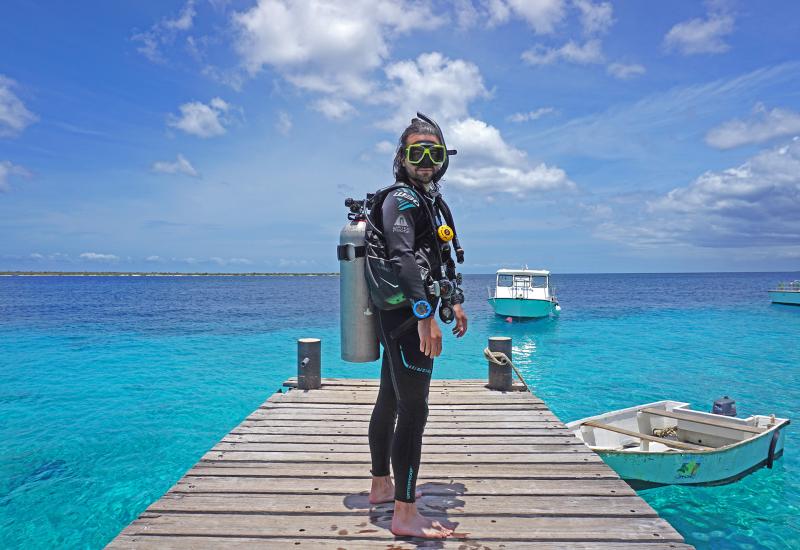Dive Training Tips: Running Low on Air

Thomas BurnsLearn from this close call.
DIVERS: Abe (DM, 450-plus dives) and Lowell (AOW, 24 dives)
SITE: Rock reef and kelp forest, Anacapa Island, California
CONDITIONS: Overcast and warm, 30-foot viz, moderate current, water temp 65oF
On their first-ever dive together, Abe, wearing a drysuit, and Lowell, in a wetsuit, descended to sightsee along the kelp-forest edge. They reached the anchor at 65 feet; Abe led diagonally down a slope. Because Lowell lagged 15 to 20 feet behind, Abe paused at intervals to let him catch up. Each time he stopped, Abe signaled “OK?” and Lowell returned an “OK” sign. After 20 minutes, at 90 feet, Abe turned the dive. They had been drifting with the current, so they swam diagonally into it as they headed up. At 80 feet, Abe turned and saw Lowell, 20 feet behind, looking wide-eyed at his SPG. Then, Lowell bolted for the surface. Abe intercepted him and forced his alternate into Lowell’s mouth. Lowell struggled, coughing, but then began breathing and calmed down. Abe dumped the air in his BC, flared to slow their ascent, and then let some air out of Lowell’s BC. The last portion of their ascent was at a nearly normal rate. At the surface, Lowell orally inflated his BC. They had drifted with the current away from the boat, but the crew spotted them and picked them up.
WHAT THEY DID WRONG
Diving together for the first time, given their difference in experience level, they should have communicated gas pressures. Since Lowell was lagging, Abe should have slowed and realized Lowell was likely breathing faster. They should have stayed closer. Lowell should have asked Abe to slow down and should have turned the dive before being so low on gas. Finally, Lowell failed to apply his training when he ran out of air.
WHAT THEY DID RIGHT
Although they should have been closer, they stayed together as a buddy team. Abe handled the rapid ascent by slowing but not stopping it, provided air to Lowell, and kept Lowell calm.
For more Learn From This stories, dive training tips and advice on improving your scuba skills, visit the Training section of our website.
FIVE TIPS FROM THIS INCIDENT
1. STAY CLOSE TO YOUR BUDDY. A rule of thumb: Be no more than two seconds away.
2. LET THE SLOWEST BUDDY SET THE PACE. A diver who struggles to keep up uses air rapidly.
3. COMMUNICATE AIR REMAINING. Turn the dive based on quickest use.
4. SECURE YOUR ALTERNATE on your torso with a quick release. Don’t hide it in a pocket or let it dangle where it can be difficult to locate quickly.
5. TAKE THE PADI RESCUE DIVER COURSE to enhance your emergency skills, including helping a panicked diver.










